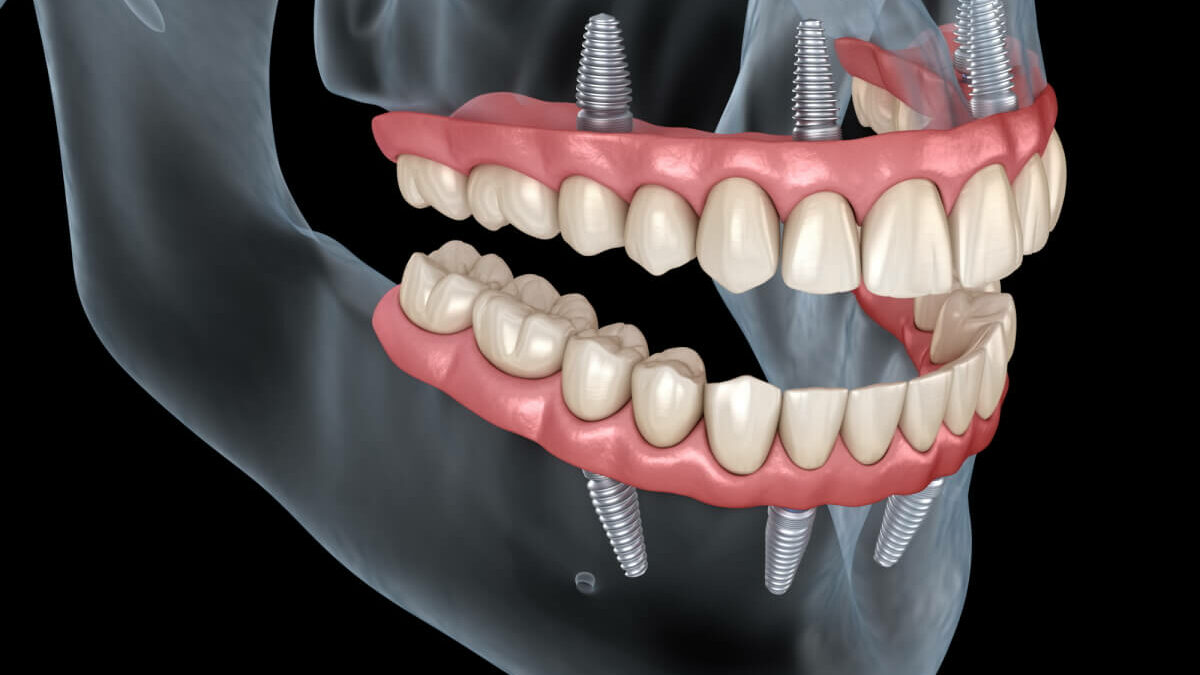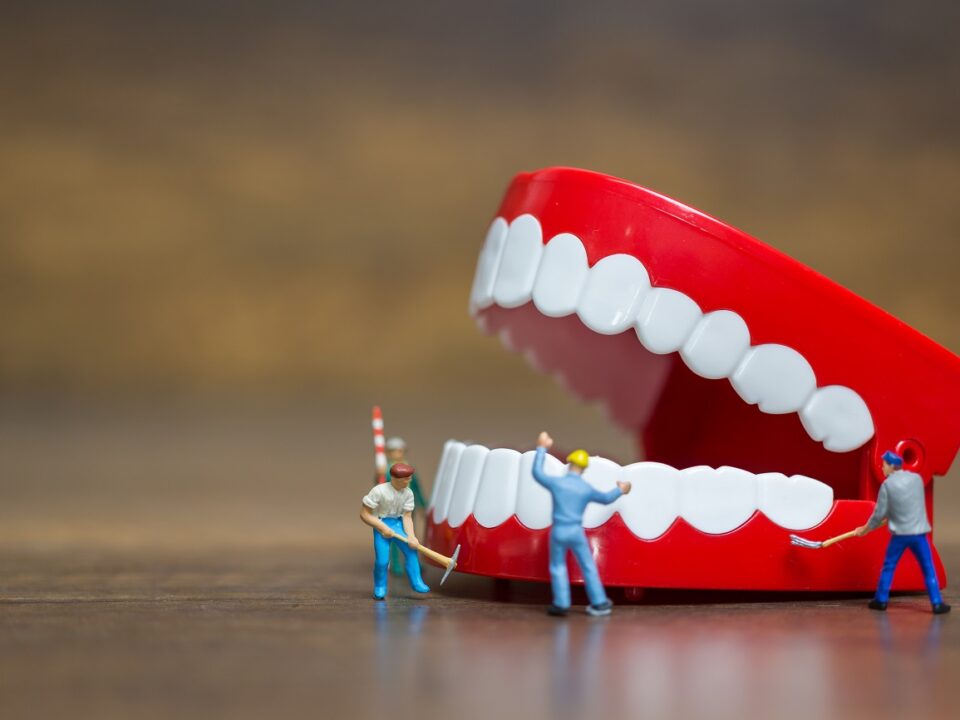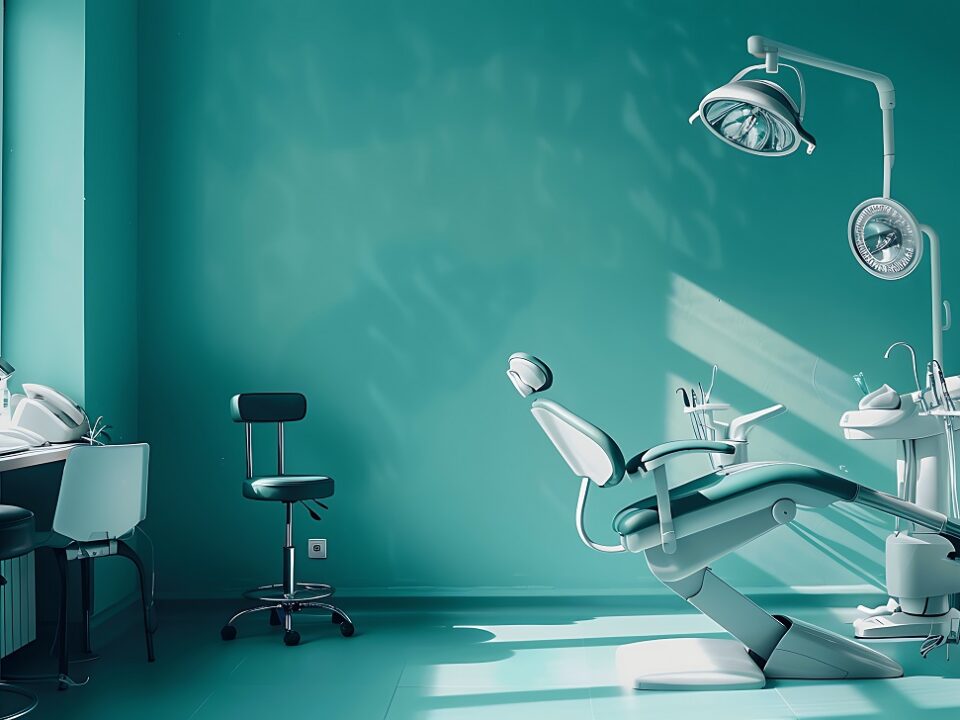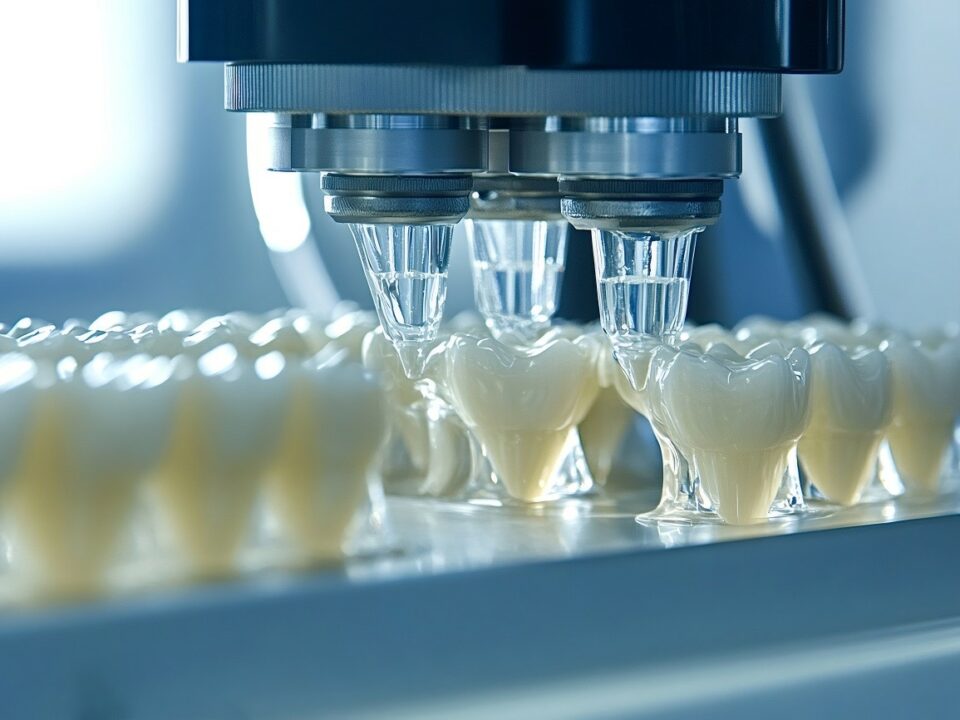
What Is An Alveoloplasty?
February 16, 2022
How long does it take to recover from dental implants: a guide
May 25, 2022Digital Dental Studio – Dedham, MA.
A complete guide for eating after dental implants: what can you eat and what should you avoid
At Digital Dental Studio, we believe in fully educating every patient about their procedures to ensure they can decide what is ideal for them. Part of that education includes information regarding the recovery process and what to expect after dental implant surgery.
What can I eat after dental implant surgery?
Dental implants will allow you to eat practically whatever food and drink you desire, and after the implants have fully integrated with the bone, you will be back to eating as normal.
However, you won’t be able to do so right after your surgery. As with any procedure, you must expect a recovery period. After the implant is inserted in the jaw, that area will need to heal. During this period, you may feel a little discomfort and sensitivity so try to stick with liquids and soft foods that can be easily cut with the side of a fork.
What Can I Eat Within the Initial 24-48 Hours?
Try to remember that you’ve undergone a surgery and as such, you need to take the procedure seriously. For the first 24 to 48 hours, you must consume only cold liquids and avoid hot foods and drinks.
Eating a nutritious, balanced diet is always important, but it’s especially essential when you’re healing after getting dental implants. Vitamins and minerals play a key role in helping your body recover after surgery. However, it’s just as important that the foods you eat are soft enough not to irritate the implant site.
Thankfully, with a planned soft dental diet there are plenty of nutritious foods to choose from when picking your meals during the first 24 – 48 hours after surgery:
- Vitamin-rich broths and blended soups to help you stay hydrated while providing nutrients.
- Mashed pumpkins, potatoes, and bananas, as well as applesauce, avocados, or hummus, all of which contain a variety of important vitamins.
- Scrambled eggs, salmon, and protein shakes since protein can help speed up the healing process.
- Smoothies with no dairy or banana ice cream, which can help numb your mouth, ease swelling, and keep you in high spirits!
So now, for the not so fun part of the process. Here is a list of foods to avoid during your recovery, we do advice to follow this guide as strict as possible to avoid any healing complications:
- Hot and spicy foods, they can cause irritation at your surgical sites, thereby slowing down your recovery. They could even increase your risk of infection. To stay on the safe side, it’s best to stick to warm or even room temperature foods and avoid anything that has been heavily seasoned with spices.
- Hard fruits and vegetables. Raw carrots and apples although nutritious are hard to chew so they should be avoided. Stick with soft alternatives like bananas and peas that offer the same levels of nutrition without being harmful to your teeth.
- Popcorn, and other crunchy snacks. Avoid popcorn, nuts and seeds or any other snack that can lodge in your surgical site, causing inflammation and discomfort.
- Sticky or chewy sweets. Stay away from sweets especially those with caramel or taffy. They tend to adhere to teeth and may dislodge a temporary restoration. If you need something sweet, choose a fruit protein shake.
- Alcohol, if you are in the habit of occasionally enjoying a glass of wine or a nice cocktail, you will have to put that custom on hold following your dental implant surgery. Alcohol can slow down healing and contribute to increased swelling. It could even have dangerous interactions with your post-op pain medications.
- Dairy products, such as milk or yogurt can cause an inflammation in the oral tissues, further damaging the gums and teeth. It is also known to trigger nausea and vomiting, so it is best to be avoided.
“PRO TIP: avoid drinking through a straw, you may get a dry socket caused by a blood clot. This can prolong healing, so sip from the glass to avoid this issue. After a few weeks, the site should heal and improve so you can start using a straw again.”
You might think eating only ice cream and pudding after implant surgery is an ideal plan. However, eating a soft dental diet will make you feel better, providing your body all the vitamins and proteins it needs to heal more quickly.
The Weeks Following Surgery
After your dental implant procedure, you’ll be anxious and excited to start eating your favorite meals again. But it is important to eat the proper foods during each healing stage.
A soft food diet is the best approach during the first few weeks after surgery. Stick to foods like soups, softened pasta, and mashed potatoes. If you’re feeling confident, try introducing soft meats like shredded chicken or fish.
Get your daily vegetable intake by boiling or steaming them until they are soft and easy to chew. Avoid anything that is too hard or crunchy, and anything that requires you to open your mouth too wide.
Cooked oats and soft cereals are great and very easy to eat while your mouth heals. Just remember that you shouldn’t eat anything that is too hot. Rather, enjoy your oatmeal at a lukewarm temperature to avoid irritation and discomfort at the site of your surgery.
How long after dental implants can I eat normally (after Final Placement of Permanent Crowns)
Healing can take up to 6 months after getting a dental implant, so it’s important to be careful and take your time whilst introducing harder foods. Pay attention to your mouth, if eating something hurts, you’re not ready for it.
So, to heal faster it’s necessary to have a diet rich in protein, many people immediately think of eating meat and nuts first. And let’s be honest, neither of these foods will be very appealing if you’ve just undergone dental implant surgery! So, we recommend these easy steps to make your diet rich in protein:
- Soft, seedless fruits (bananas, mangoes, pears, peaches)
- Steamed vegetables
- Soups and stews with soft meat
- Broiled fish
- Waffles and pancakes
- Cooked cereals (oatmeal, grits, etc.)
- Thin pasta (spaghetti, elbow macaroni, orzo)
- Mashed potatoes
- Very soft bread and muffins
- Ice cream
- Scrambled eggs.
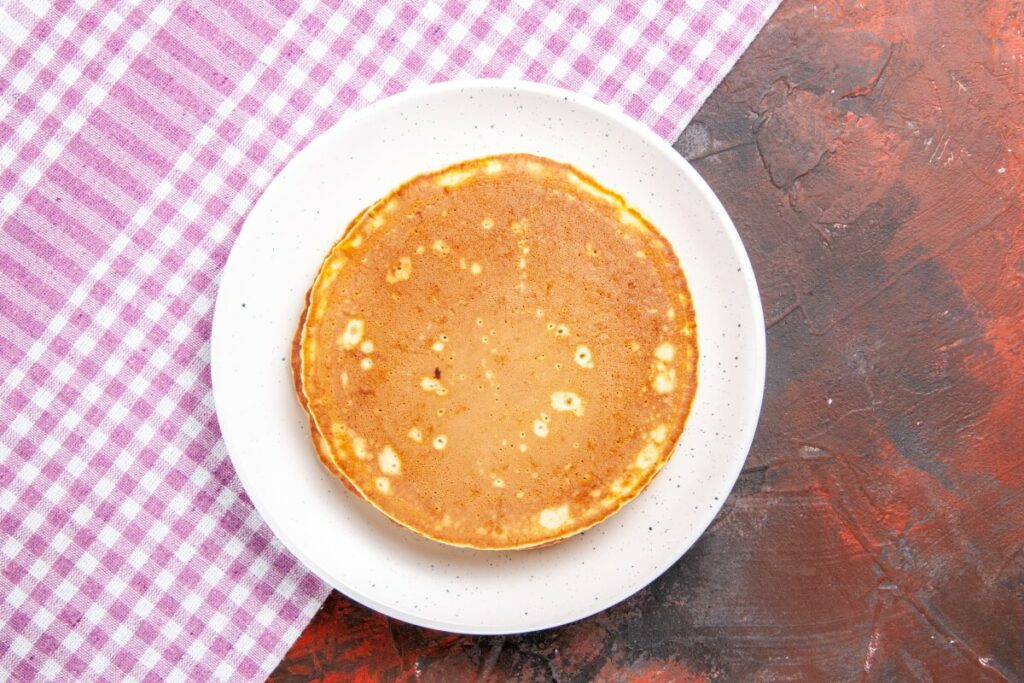
Pancakes are soft and therefore recommended for people with dental implants
Dental implants are the next best thing to healthy, natural teeth, as they recover patients chewing abilities and help them enjoy their favorite foods. But until they heal properly, patients should stick to a softer diet and avoid the following foods:
Seeds and nuts, if you bite down on hard food too soon, you will certainly feel pain and may also cause the implant to fail. As a rule, if your food makes a noise when you chew them, you should really be avoiding them.
Pizza crust. It’s important to stay away from foods that are crunchy, tough, and chewy. After a few months of your selfless sacrifice, your newly installed implant will be fully integrated, permanent, and ready to handle any kind of food and beverage you throw its way.
Many people have asked us: What about coffee or wine? How long should we avoid them too?
As we mentioned before, hot beverages and alcohol are not recommended within the first 24 – 48 hours after surgery. Right after surgery, most likely antibiotics will be prescribed, once you have finished your medication, you may incorporate your favorite drinks in moderation.
Be careful when drinking coffee, tea, or wine, as they can easily stain your dental implants as they would do your natural teeth. After you enjoy a cup of joe or a great glass of red wine, make sure you brush and rinse your teeth afterwards. This will help keep the stains at bay, it also removes the acids left behind.
Oral Hygiene after dental implants
Dental implants are designed to be a permanent solution and you take good care of them they can last between 20 and 30 years.
Their durability does not depend solely on the maintenance you give to your teeth, but also on the lifestyle choices as a whole: choosing a healthier diet, avoiding excessive sugary products, dealing with stress, or grinding and even quitting bad habits like smoking.
Daily home care is important for the long-term health of your dental implants. Your cleaning regimen with dental implants is almost the same as it is with your natural teeth, just brush, floss, and rinse with mouthwash every day. We will recommend adequate toothbrushes and accessories for your daily oral hygiene care.
And if you still have bits of food stuck between your dental implants, don’t worry you just might need a different flossing system. For such instances, an oral irrigator or “water flosser” can be a real lifesaver. This handy irrigation tool can reach those hard-to-get spaces in your mouth and effectively cleaning between teeth, under gumlines and around dental implants. There is an abundance of research showing that water flossers remove more plaque from your teeth than traditional floss.
Brushing and cleaning after dental implants.
Back to basics is key. Brushing and flossing is your regular oral hygiene regimen and mouthwash is highly recommended. Brushing is easy but flossing may present some problems especially if more than one implant is placed with a bridge between them.
This means there is no way for the string floss to pass through the hard crowns. In that case, other flossing methods can be used such as interdental brushes, floss threaders, and of course (our favorite) water flossers as we mentioned before.
We also recommend visiting your dentist regularly; this is the most important piece of advice.
At home, you can probably see and therefore control what is right in front of you. Meaning the crown and the gums, but you have no control whatsoever on what goes on beneath the surface of the bone, meaning the fixture. So, a regular visit to the dentist for a quick check-up and a few x-rays is crucial to the survival and longevity of your implants.
Long story short, taking care of implants or any other artificial restoration for that matter, doesn’t differ much from taking care of natural teeth. This is because the same problems that could affect natural teeth could also happen to dental implants and crowns (except for decay of course).
The next time you start wondering how to clean dental implants, just think of what you would do to keep your natural teeth clean and do just that!
Conclusion:
When you make the decision to have dental implants, you are making an investment that will last a lifetime. Improve your quality of life and recapture your lifestyle after tooth loss and achieve overall well-being.
Dental implants not only have the power to improve your appearance and give you more confidence. But you will be able to talk freely and enjoy your favorite foods and allow you to live your life without worrying about discomfort or embarrassment when it comes to your smile.
Think of it as an investment that you make in your overall health. It may mean a little sacrifice along the way, but you can benefit from dental implants if you are willing to make some changes! With proper care and checkups, your dental implants should last 20 years or longer.
How do we work and how much a treatment cost:
One of the key advancements at digital dental studio by Dr Anna Vishart in Dedham, MA is the utilization of 3-D printing technology in conjunction with photogrammetry. This cutting-edge technology allows us to create precise and accurate dental models, implants, and prosthetics. By using 3-D printing and photogrammetry, we can capture detailed images of the patient’s mouth and create virtual models that serve as blueprints for the treatment.
The same-day treatment approach we offer is a game-changer for patients in need of full mouth implants or implant-supported bridges. Traditionally, these treatments would require multiple visits and a lengthy waiting period. By dividing the treatment into stages and utilizing 3-D printing, we can significantly reduce the time and effort required, making it more accessible and convenient for patients.
In conclusion, our digital dental studio has embraced cutting-edge technology to revolutionize the way full mouth implants and implant-supported bridges are delivered. By utilizing 3-D printing in photogrammetry, we can provide precise and high-quality treatments with improved aesthetics. The same-day treatment approach and the ability to divide the treatment into stages make it more accessible and convenient for patients in need. With our advanced technology and skilled professionals, we are committed to delivering exceptional results and restoring smiles with utmost precision and care.
During the first stage, we will place the implants and utilize scans and photogrammetry to create a 3-D printed full mouth implant-supported bridge within a remarkable 4 to 5 hours. This speedy process ensures that the patient can quickly regain their oral function and aesthetics. The cost for this first stage is 19000 dollars.
After the first stage, the healing process typically lasts between 4 to 6 months. During this time, the patient can use the 3-D printed bridges, which are a cost-effective alternative to the final zirconia bridge. These bridges provide temporary restoration and allow the patient to continue their daily activities without any major interruptions.
Once the healing process is complete, we move on to the second stage. This stage involves taking new scans and photogrammetry to create the final porcelain bridge. By extending the timeframe from 6 months to a year or even 18 months if needed, we provide the patient with more flexibility in financially preparing for the final zirconia bridge, which comes with an additional cost of $8000.
This unique two-stage approach sets us apart from other dental offices. We understand that affordability is a significant concern for patients seeking extensive dental treatments. By dividing the treatment into stages and offering the option to use 3-D printed bridges during the healing process, we provide a more accessible and budget-friendly solution.
At our dental studio, we prioritize the patient’s needs and strive to make high-quality dental treatments more accessible. By utilizing cutting-edge technology like 3-D printing and photogrammetry, we can deliver precise and aesthetically pleasing results. Our two-stage approach, along with the option to extend the timeframe for the final bridge, ensures that patients can comfortably afford the treatment while still achieving optimal oral health and a beautiful smile.
We can help you get the smile you’ve always wanted and maintain your implants long into the future. Contact us today and let’s discuss your options, and for more information about our treatment, click here.

